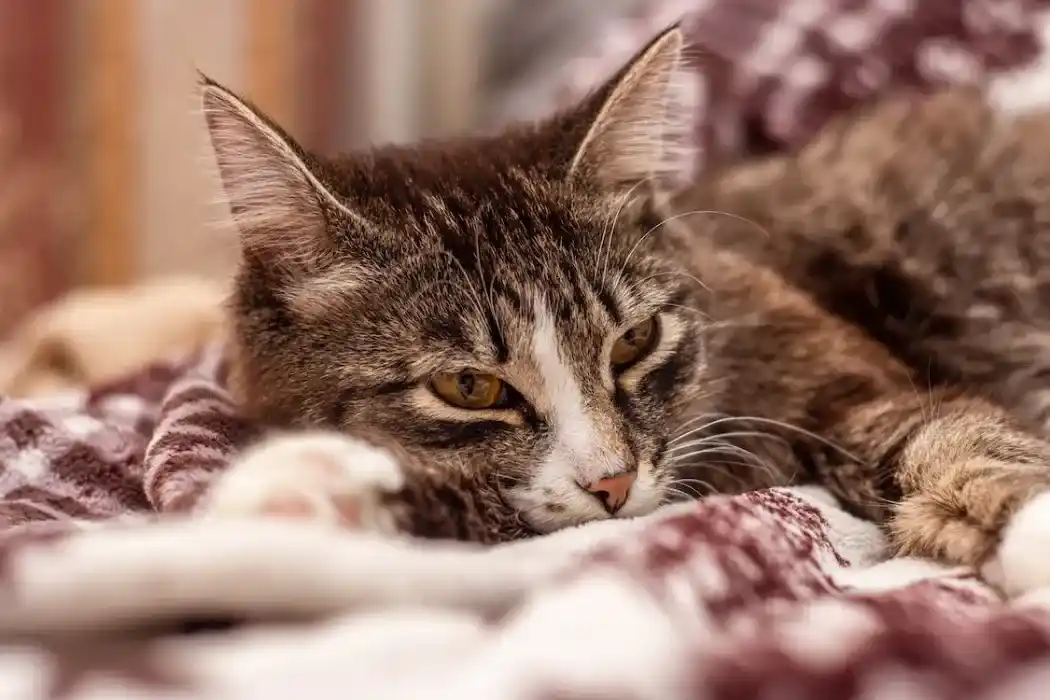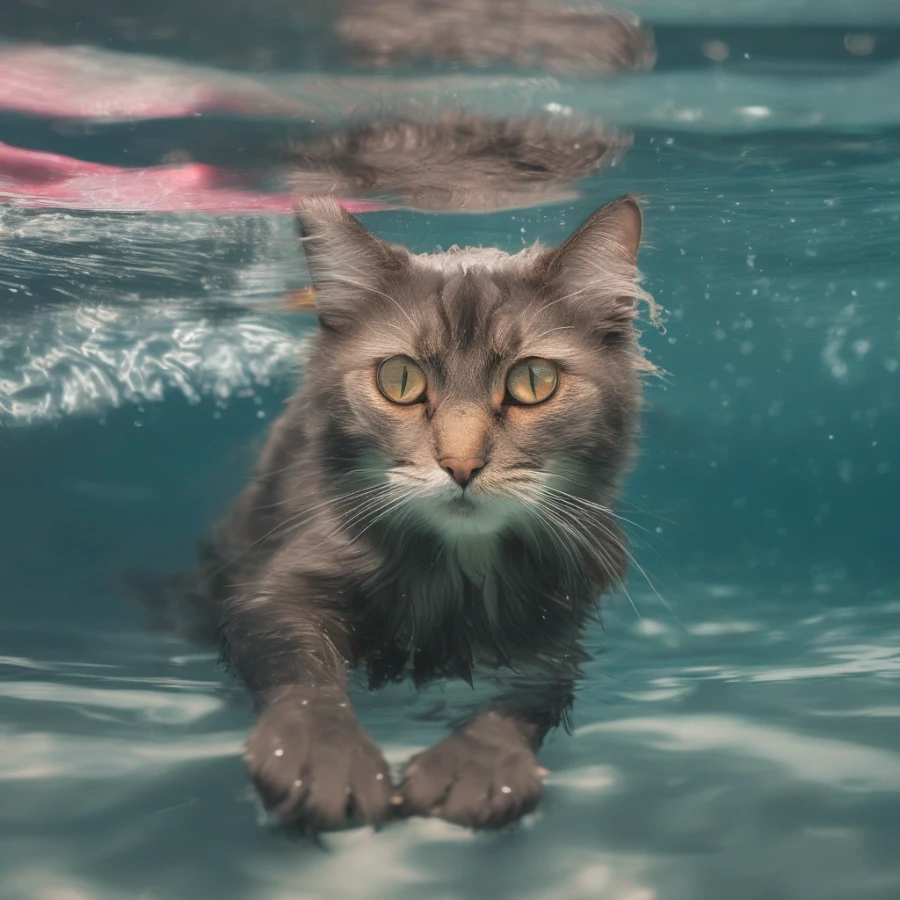How Hot is Too Hot for Cats

Published by: CatsLib
7 Min Read
80°F (27°C): Cats are usually comfortable at this temperature range. It's within their thermal neutral zone, meaning they don't need to actively regulate their body temperature.
Above 90°F (32°C): Cats can start to become uncomfortable in temperatures exceeding 90°F. They may show signs of distress, such as panting, lethargy, seeking cool spots, and grooming excessively.
Above 100°F (37.8°C): Cats are at risk of heat-related illnesses, including heatstroke, at temperatures above 100°F. They may experience rapid breathing, excessive panting, drooling, vomiting, and disorientation.
Remember that humidity can exacerbate the effects of heat on cats. High humidity can make it harder for cats to cool themselves through panting and evaporation. Furthermore, certain factors like age, health condition, and coat type can make some cats more vulnerable to heat stress.
To ensure your cat's safety during hot weather:
Provide Plenty of Fresh Water: Ensure your cat has access to clean and fresh water at all times.
Offer Cool Spots: Set up cool spots in your home, such as shaded areas, tiled floors, or areas with good air circulation.
Avoid Direct Sun Exposure: Keep your cat indoors during the hottest parts of the day and provide shaded areas if they are outside.
Use Fans and Air Conditioning: Fans and air conditioning can help regulate indoor temperatures and keep your cat comfortable.
Grooming: Regular grooming can help remove excess fur and aid in cooling.
Never Leave Cats in Cars: Never leave your cat in a parked car, even for a short period. The temperature can rise dangerously within minutes.
If you suspect your cat is experiencing heat-related distress or heatstroke, it's crucial to take immediate action. Move your cat to a cooler area, offer water, dampen their fur with cool water (not ice-cold), and contact your veterinarian for guidance. Heatstroke can be life-threatening, so it's important to act quickly.
What Temperature do Cats Like
Cats are comfortable within a range of temperatures, but they generally prefer moderate conditions that align with their natural habitat. Here are some temperature ranges that cats tend to find comfortable:
60°F to 80°F (15°C to 27°C): This range is often considered the most comfortable for cats. It falls within their thermal neutral zone, meaning they don't need to expend energy to regulate their body temperature. Cats can rest and be active without discomfort.
50°F to 70°F (10°C to 21°C): Cats with thick fur might find temperatures at the lower end of this range more comfortable, while those with shorter fur might prefer the higher end.
Outdoor Considerations: Outdoor cats often adapt to a wider range of temperatures. However, they still seek shelter during extreme weather conditions, including both hot and cold temperatures.
Cooler Nights: Cats tend to be more active during the cooler parts of the day and night, as they are crepuscular animals (most active during dawn and dusk). They might prefer slightly cooler temperatures during these times.
Comfort Varies: Just like people, individual cat preferences can vary. Some cats might enjoy slightly warmer temperatures, while others might prefer it a bit cooler.
It's important to provide your cat with options for finding the temperature that suits them best:
Indoor Environment: Ensure your home is well-insulated and maintains a comfortable temperature range.
Cooling and Heating Options: During hot weather, provide cooling spots with good air circulation. In cold weather, offer warm and cozy spaces, like beds, blankets, and heated pads designed for pets.
Shaded Outdoor Areas: If your cat spends time outdoors, ensure there are shaded areas where they can escape the sun and find comfort.
Observe Your Cat: Watch for signs of discomfort or distress. If your cat appears too warm or too cold, adjust their environment accordingly.
Ultimately, observing your cat's behavior and comfort level is key to ensuring they're in an environment with a temperature that suits them. Providing them with choices and creating a balanced indoor environment can help keep your cat content and healthy.

What Temperature is Too Hot for Cats Indoors
Cats are generally more comfortable in temperatures that are similar to what humans find comfortable. The ideal temperature range for most indoor cats is between 65°F and 75°F (18°C to 24°C). However, cats have some natural adaptations that make them more tolerant of heat than humans. They can handle slightly warmer temperatures, but it's important to monitor their behavior and provide them with ways to stay cool.
If the indoor temperature rises above 80°F (27°C) or higher, it can become uncomfortable for cats. At these temperatures, they might start to show signs of heat stress, such as excessive panting, lethargy, seeking out cool surfaces, and grooming excessively. In extreme cases, prolonged exposure to very high temperatures can lead to heatstroke, which is a serious medical emergency.
Here are a few tips to help keep your indoor environment safe and comfortable for your cat during warmer temperatures:
Provide Access to Water: Make sure your cat has access to fresh, clean water at all times. Hydration is important in helping them regulate their body temperature.
Create Cooling Areas: Set up cool spots in your home, such as shaded areas near windows, where your cat can relax and stay cool.
Use Fans and Air Conditioning: If the temperature is getting too warm, use fans and air conditioning to help maintain a comfortable environment.
Keep Curtains and Blinds Closed: Direct sunlight can heat up your home. Keep curtains or blinds closed during the hottest parts of the day to prevent excessive heat buildup.
Provide Cool Surfaces: Cats enjoy lounging on cool surfaces, so consider placing a cooling mat or a tile surface in their favorite resting spots.
Avoid Hot Surfaces: Keep in mind that surfaces like stovetops, radiators, or electronics can become very hot and might burn your cat if they come into contact with them.
Avoid Overexertion: Cats might become more lethargic in the heat, so avoid encouraging them to engage in strenuous play during the hottest parts of the day.
Grooming: Regular grooming helps remove excess fur, allowing better air circulation and keeping your cat cooler.
Monitor Behavior: Pay attention to your cat's behavior. If they seem overly restless, panting excessively, or seem distressed, it's a sign that the temperature might be too hot for them.
Always remember that individual cats might have different temperature tolerances based on factors like breed, age, health, and coat length. If you're concerned about your cat's comfort during hot weather, consult with your veterinarian for specific advice tailored to your cat's needs.



